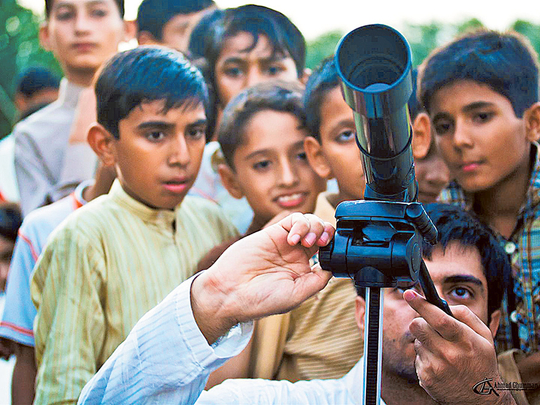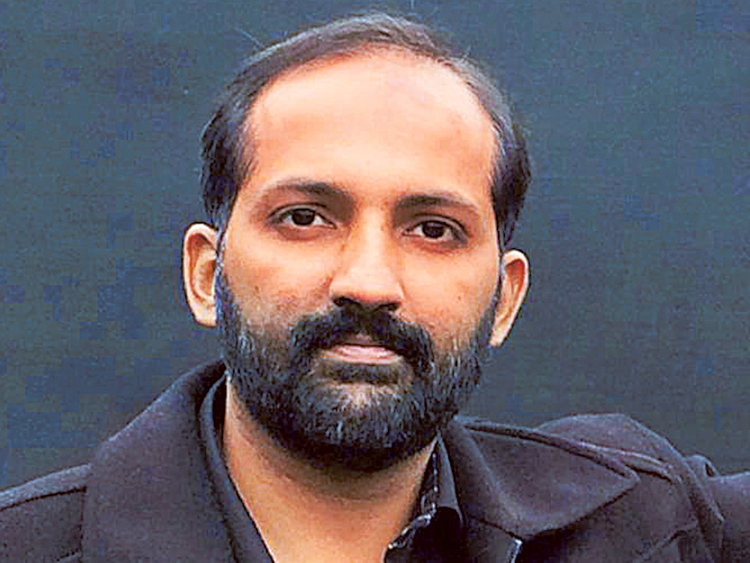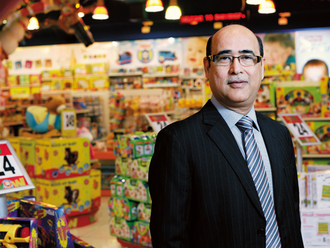
When Pakistani astronomer Umair Asim tells people about his work, the reactions he gets are often rather odd. “People put their hands forward and ask how their week will be,” he tells Weekend Review. “It’s very common. People confuse astrology and astronomy. Many educated people do that. So when I tell them astrology is not part of science, it not proven, their feelings are a bit hurt.”
In Pakistan astronomy is a neglected subject in schools and institutions of higher education. “Astronomy is not in the syllabus [in schools]. There are no teachers for astronomy, there are no departments for it,” says Asim, who also works as a senior vice-principal at a girl’s high school.
He grew interested in astronomy as a child. “My mother tells me that even before I started going to school, I would go out and look at the stars — without a telescope, obviously,” says Asim. “Just like a poet is born a poet, I feel I am a born astronomer.”
Asim is president of the Lahore Astronomical Society, which was started in 1995 by a few students. “Some of my companions at that time started it,” he says. Asim runs his observatory on the roof of the building in which the society is based.
Asim gives me a guided tour of the place, showing me where the society holds their meetings and workshops. We get to the roof where his observatory is located. “This is a Celestron C14,” he says, showing me his telescope. “Its mirror has a 36-centimetre diameter — one of the largest telescopes in Pakistan.”
This was also the first telescope Asim ordered in 2004. “People would tell me not to order such a big one as it was my first and I still had to learn a lot,” he says. “But I was so obsessed that I just ordered a high-end telescope so I didn’t have to order another again. All these telescopes are made in America.”
We head to a tiny “human room” next to the telescope where he has a laptop and other gadgets. “I have to be careful that it doesn’t rain because the telescope is exposed. For that, I have installed a cloud sensor outside. On this screen there are changes in the data output, and if I fall asleep, the alarms also go off.”
A beautiful planisphere, or star chart, has been drawn on the ceiling. “These are the constellations that are seen from this observatory throughout the year,” he says.
On one side lies a telescope belonging to one of the members. The society has close to 50 active members. But the numbers can swell up to 150-300 when they go on field trips outside the city, away from light pollution. A popular destination is Changa Manga, a forested area with a guest house, close to Lahore. “We set up the telescopes outside and spend nights over there. We are very active in observation and imaging.”
People from all walks of life — students, teachers, engineers, businessmen, or even armymen — come to stargaze. Enthusiasts can spend whole nights on the roof. “They look at the sky, galaxies and star clusters. There is information sharing, people get philosophical: ‘It’s such a big universe, what is the meaning of my life?’ We finish at Fajr time.”
Asim is particularly keen on getting underprivileged children to take an interest in astronomy. On June 21 last year, which was International Sun Day, Asim brought his solar telescope to a public park. “We showed the Sun to children playing there. A look at the fiery Sun is enough to get them hooked to astronomy.”
The Charlie Bates Solar Project, a US-based non-profit organisation, has donated them solar glasses. “We freely distribute them to everyone who participates in our solar observations,” says Asim.
In 2014, Asim became the first Pakistani to be honoured with the Jon Wood Award by the American organisation. “They sent me a telescope, which is Pakistan’s best refractor telescope,” he says.
In his own small way Asim has been bringing international recognition to Pakistani astronomy. In 2011 his picture of the moon was selected as Lunar Photo of the Day on a popular international website. “It was the first time Pakistan featured on that forum because of that picture,” he tells me.
Asim’s drive to engage the public in astronomy has taken him around Punjab province and beyond. He has worked in Falakyati Melas (astronomy fairs) and visited universities. He once visited a madrassa in Islamabad. The imam at the madrassa wasn’t very receptive at first. “They were not letting the children come outside. So I went to them and said there is nothing non-Islamic in [doing] this. In Islam there is ilm [knowledge]. So, just like the ilm you give, this too is a kind of knowledge. So I brought them [telescopes] and children got to see some of it. But obviously, they are giving a lot of importance to religious education.”
The imam soon warmed to the idea of looking through the telescope. “He appreciated it a lot. Actually, he was quite astonished that it’s so easy to look at the Sun with today’s telescopes. He also saw the fire, the hot plasma, emanating from the Sun. I also gave him solar glasses, so he could view the Sun afterwards and show it to everyone at home.”
Some of the stranger queries Asim receives are from those interested in aliens. “I have been asked whether I can watch UFOs from my telescopes and if I have seen any.” So, have there been any UFO sightings in Pakistan? “There is no evidence about the entire phenomenon of UFOs. Having a concept is fine, but proving it is the main thing.”
Even local TV channels have begun taking an interest when an important celestial event occurs. In 2012, the transit of planet Venus across the Sun was covered live from the rooftop, with three or four television vans parked outside the observatory building.
One could say Asim’s observatory is Pakistan’s version of Nasa. “I would like to think so. I would like it if people understand it in this manner. But the work being done from this observatory is the best in Pakistan.”
Asim has ambitious plans for his observatory. “My desire is not that people see the moon through the telescope once and the story is over. I want to take it a bit further. The efforts I am making now are to create a bridge between the amateur and professional communities.”
Asim says this is the only observatory in Pakistan from where raw scientific data is being collected. One of Asim’s projects is collecting data on variable stars whose brightness fluctuates. He sends the collected data to the American Association for Variable Star Observers (AAVSO), the world’s largest organisation studying variable stars.
Asim is also focusing on preparing astronomy kits for schools. These include a basic telescope, written material, guidelines on how to start an astronomy society and a star wheel to help students become familiar with the night sky. He also runs a video podcast called “Hamari Kainat” (Our Universe) with a friend, Dr Salman Hameed, who is based in the US and has a PhD in astronomy. “Its purpose is to get ordinary Pakistanis to learn about astronomy. We explain it to them in Urdu, in a very easy language.”
The reactions he gets from his outreach programmes are very uplifting. “When we tell them the stars they see are all suns, they are very shocked. They are mesmerised when we tell them how big our galaxy is and how great is the distance between galaxies, when they understand the vast concept of time and space.”
In a country with serious problems related to terrorism and political turmoil, astronomy offers a larger perspective on matters. “In Pakistan when you tell someone that the universe is so big, and Earth is such a tiny planet, the conflicts start to feel very insignificant,” says Asim. “Humans feel very small when they understand the universe. Those personal grudges and fights start to feel less [significant].”
Syed Hamad Ali is a writer based in London.












